Last Updated on April 11, 2025
If you’re curious about foraging but don’t know where to start, this guide to common wild edible plants can help you begin the fascinating journey into foraging.
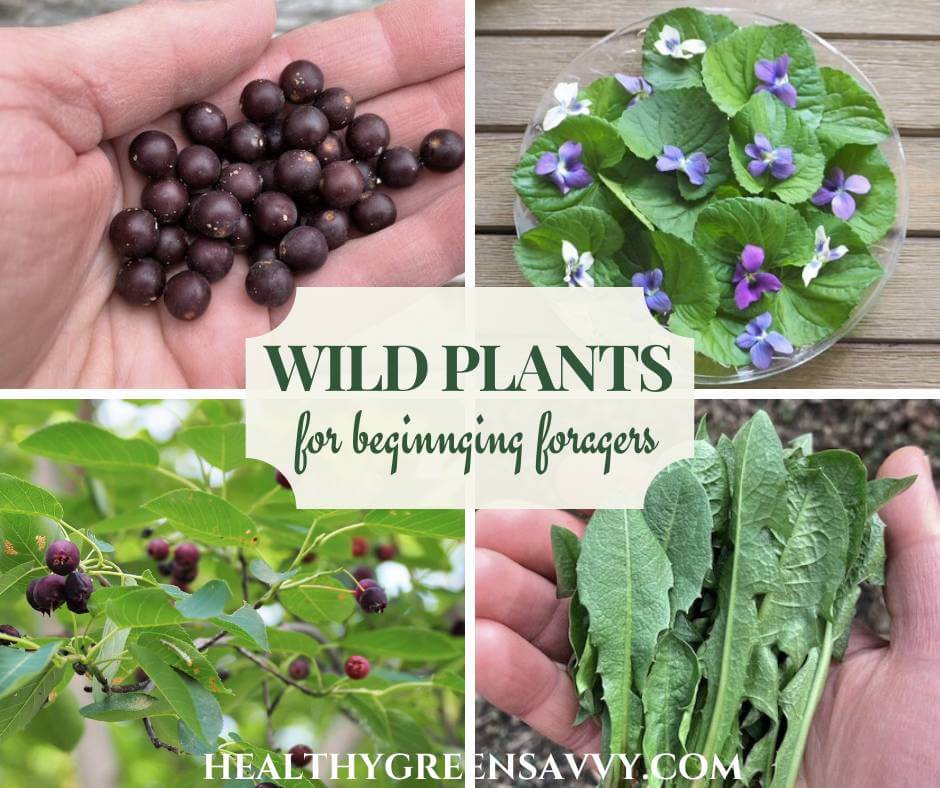
Have you been curious about foraging wild edible plants but haven’t quite known how to begin? This post will cover some common and easily-identified wild plants to get you started. Read on to learn more about them.
FORAGING BASICS
Before you get started foraging, it’s critical you follow some fundamental rules for safe foraging:
- Identify carefully: Always use a reputable field guide to make absolutely sure you’ve got the right plant by checking multiple features before consuming any wild edible plant. Mistaking an edible plant for a toxic lookalike can send you to the hospital or even kill you. When in doubt, don’t eat it.
- Forage sustainably: Take only what you need, leaving plenty for wildlife and plant regeneration. A good guideline is to take ten percent of what’s there, except in the case of invasives like garlic mustard. In those cases, pulling up all of it does the ecosystem a service.
- Obey the law: Many public lands have regulations about foraging. Check local guidelines and get permission before foraging on private property.
–> Always consult a thorough and trustworthy foraging guide. THE best guide I’ve ever used is Sam Thayer’s Field Guide to Edible Wild Plants, linked below.
One of the best ways to learn about foraging in your area is taking a class with a local guide. Search under ‘foraging class near me’ and you might be surprised how many options there are.
If you’d like something more comprehensive that you can do from the comfort of your sofa, consider taking one of the Herbal Academy‘s online courses on botany or foraging
So now that we have all that important health and safety info out of the way, let’s talk about which plants to start with. Generally, we start with easily identified plants you might already know that have no toxic look alikes.
Dandelions, for example, are an excellent starter plant. Most people know exactly what they look like, they’re easy to find, and their look alikes won’t send you to the hospital.
They’re also super-tasty, whether you’re using tender spring greens in salads, putting flowers in your muffins, or making a yummy coffee substitute from the roasted roots.
Best of all, they’re probably growing in your yard already!
Below are some of the best edible wild plants to look for in your yard or neighborhood.
WILD EDIBLE PLANTS FOR THE BEGINNING FORAGER
WILD FRUITS
SERVICEBERRIES
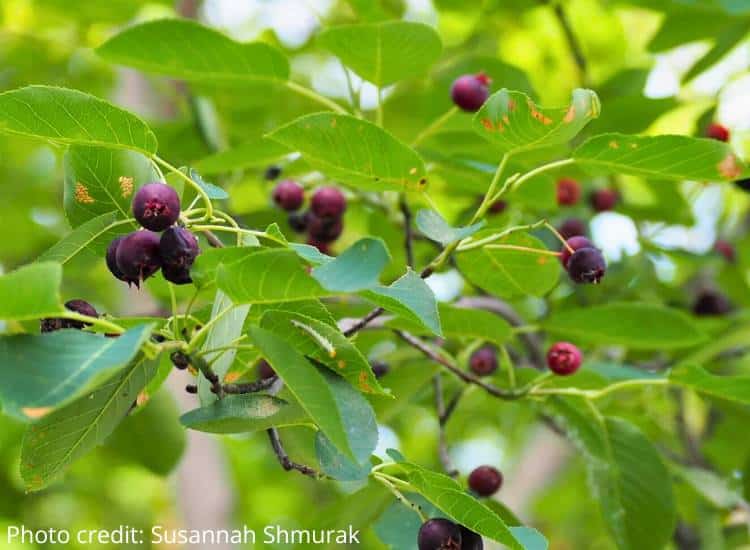
At the absolute top of any forager’s list for delicious wild edible plants, serviceberries are easy to find and seriously delicious.
Also known as saskatoons or juneberries, you can find these tasty fruits in the latter half of June, hence the name.
Serviceberries are popular in landscaping, so they’re easy to find in either tree or shrub forms. Find out more about foraging juneberries.
They’re wonderful fresh, but they don’t keep long. If you find yourself with a surplus, check out this collection of serviceberry recipes.
MULBERRIES
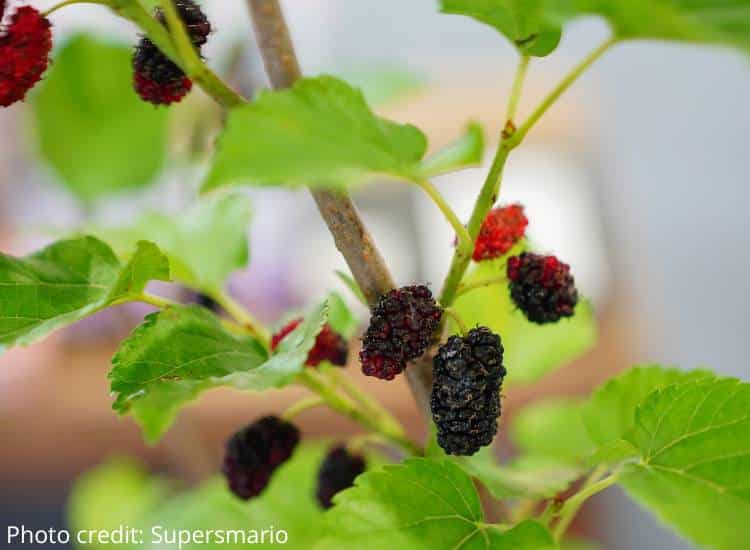
Another easy-to-find wild fruit, mulberries ripen in early to midsummer. You may find black, red, and white varieties; each has a slightly different flavor.
Get more details about identifying mulberries then explore our collection of delicious mulberry recipes.
Mulberry leaves can also be used as a salad green early in the season. Leaves can be used throughout the season to make a pleasant-tasting mulberry tree leaf tea, which is rich in antioxidants.
WILD BLACK RASPBERRIES

Wild black raspberries are flavorful relatives of cultivated raspberries that ripen just after mulberries start producing. Also known as blackcaps or black cap raspberries, they’re sometimes mistaken for blackberries.
Enjoy wild black raspberries fresh, baked into muffins, or made into jam. Note they’re rather seedy, so jams made from them will be as well.
Find out more about identifying wild black raspberries.
Other species of wild raspberries grow in different parts of the country, like wineberries and salmonberries. Wild blackberries can also be found in many parts of North America and Europe.
CRABAPPLES
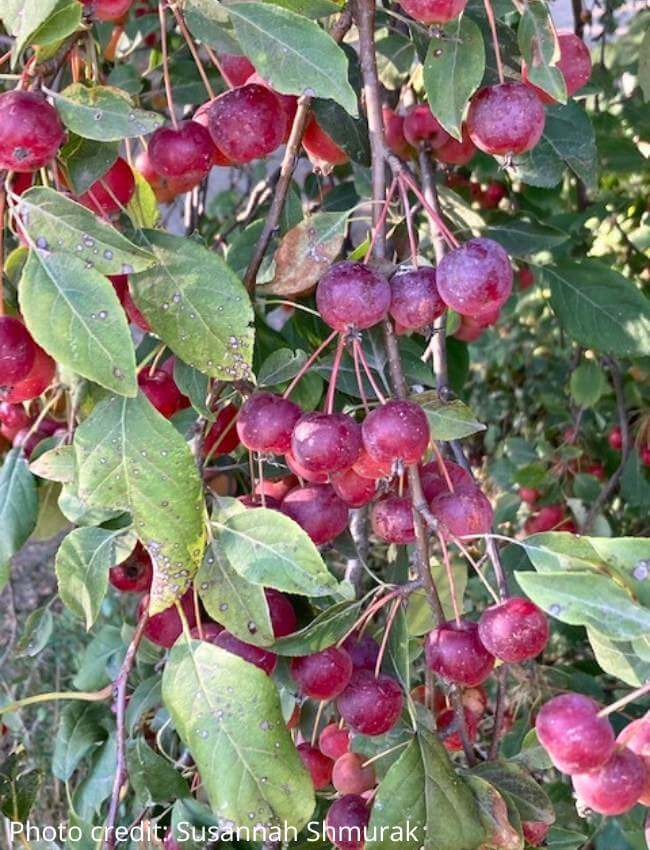
Crab apples are just small apples, though they tend to be on the tart side. Some larger crab apples taste pretty good fresh, especially if you’re someone who likes tart apples (I definitely do).
Some taste much better than others. Generally the smallest are the most bitter.
You’ll find them growing in many ornamental landscapes, ripening late summer into fall. They’re high in pectin, making them ideal for setting jams and jellies. but they make great jellies and sauces.
Find out more about the many uses for crab apples.
WILD PLUMS
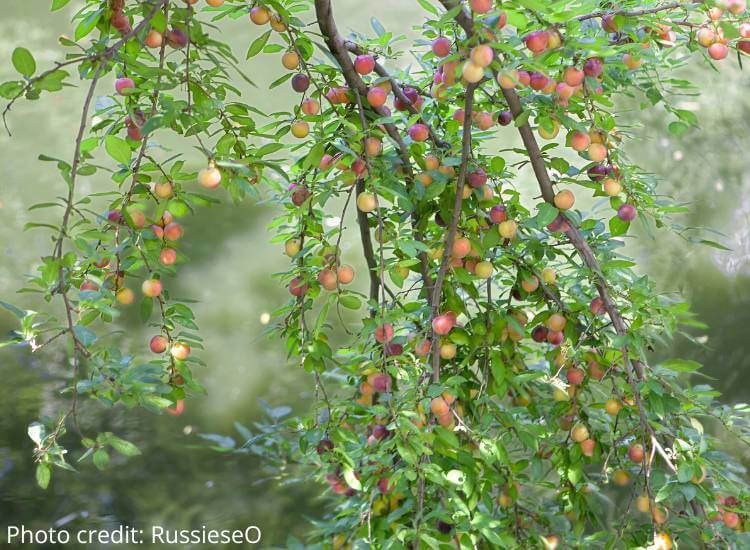
You can find wild plums growing on small trees in wooded areas and along riverbanks> They ripen in late summer. They can be eaten fresh or used to make sauces and desserts.
Beach plums are a type of wild plum that grow on low shrubs near the coast. They ripen in in late summer and are quite tart, so typically used to make jam or jelly.
HACKBERRIES
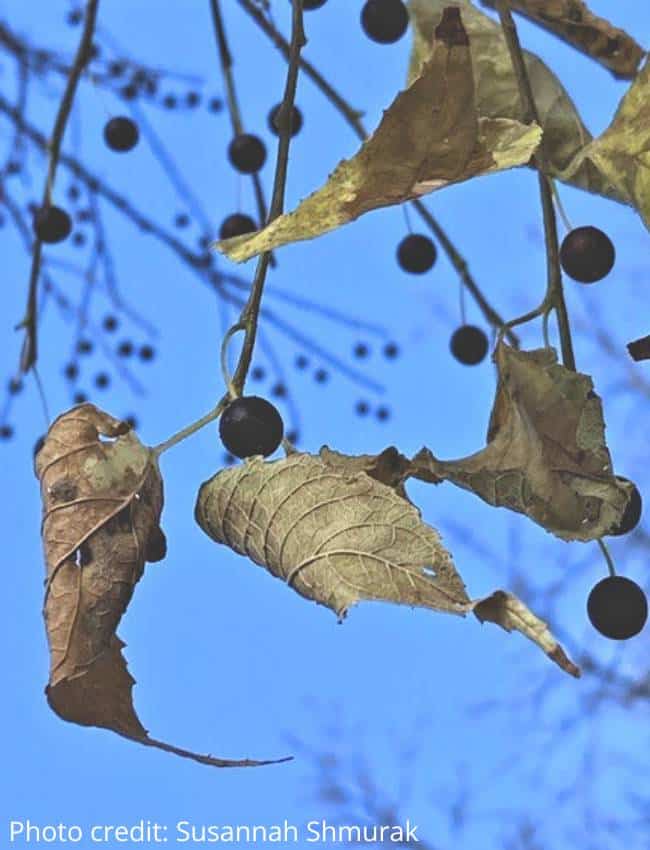
Hackberries are a lesser-known food to forage, but they’re wonderful to know about since they ripen in fall and persist through the winter, when there’s a lot less to forage than at other times of year.
Hackberries make an excellent survival food because they contain protein, fat, and carbohydrates. The tiny berries have a sweet outer layer that tastes a lot like dates. Their centers are quite hard –some feel like they might break your teeth, while others crunch easily like the shell of an M&M — but they are edible.
They’re great for snacking (especially if the inner seeds aren’t the tooth-breaking type) and can be added to hot cereals or baked goods.
Hackberry trees are common as street trees in urban areas, making them easy to find.
Read more about identifying and using hackberry fruits.
There are numerous other wild fruits to explore if you want to expand your foraging repertoire further.
EDIBLE GREENS & FLOWERS
DANDELION
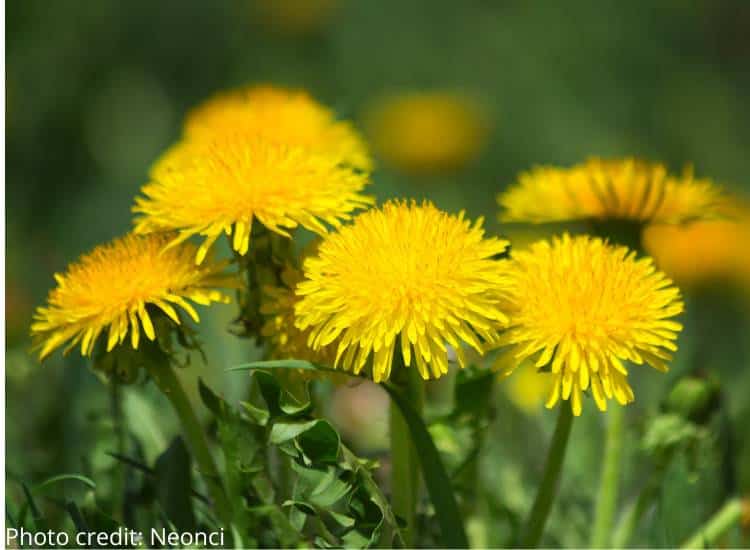
Dandelions are a perfect plant to start with if you’re new to foraging. You’ve known these plants since childhood, even if you didn’t realize they were edible.
One of the most nutritious wild edible plants you’re likely to find, dandelions’ leaves, flowers and roots have numerous uses, from drinks to desserts.
Once you’ve identified and harvested some dandelions be sure to check out the more than 35 uses for dandelion I’ve collected from creative foragers.
You can also try an easy recipe for dandelion tea, and be sure to check out the many other possible wild greens to seek out.
WILD VIOLETS
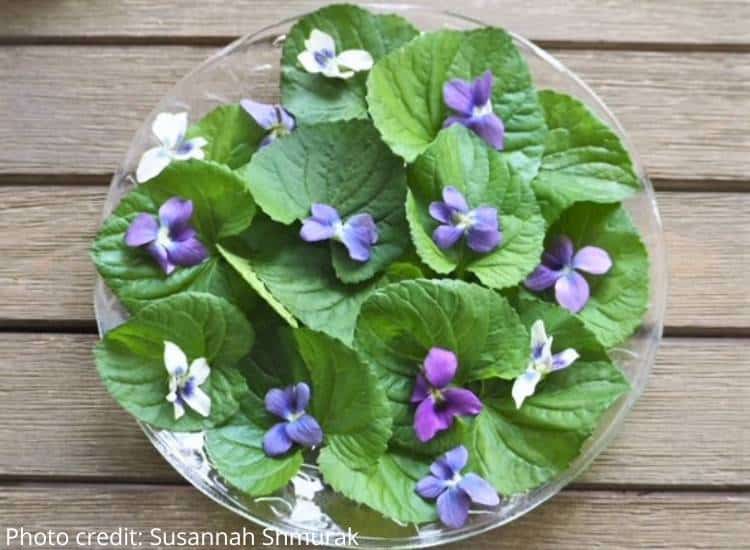
Another wild plant you might have a long familiarity with, wild violets have edible flowers and mild, pleasant-tasting leaves (best when they’re young). You can add both to salads, or use leaves in cooking, though be forewarned their high mucilage content (which makes them among the best herbs for coughs) can mean they come out a bit slimy when cooked.
Older leaves can be used to make a pleasant-tasting wild violet tea, one of many foraged wild teas to try, Check out our collection of wild violet recipes for creative ways to use these lovely spring greens.
There are dozens more wild herbs to explore if you love the idea of foraging medicinal plants.
WOOD SORREL
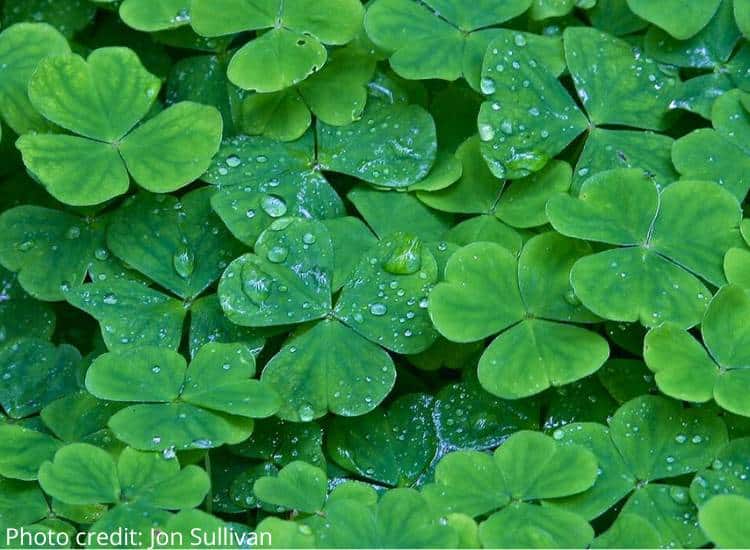
Wood sorrel is another childhood favorite you may have called sour grass or lemon hearts when you were young. A lot of people mistake them for clover, which isn’t a problem since clover is also edible, if not especially delicious. Read the post on yellow wood sorrel to learn to tell the difference.
Wood sorrel’s tangy leaves make a tasty snack when you’re working in the garden. You can also toss them in salads or add them to smoothies.
Foraging tip: Harvest whole stems and eat leaves and flowers right off the plant rather than picking leaves one by one.
LAMBS QUARTERS
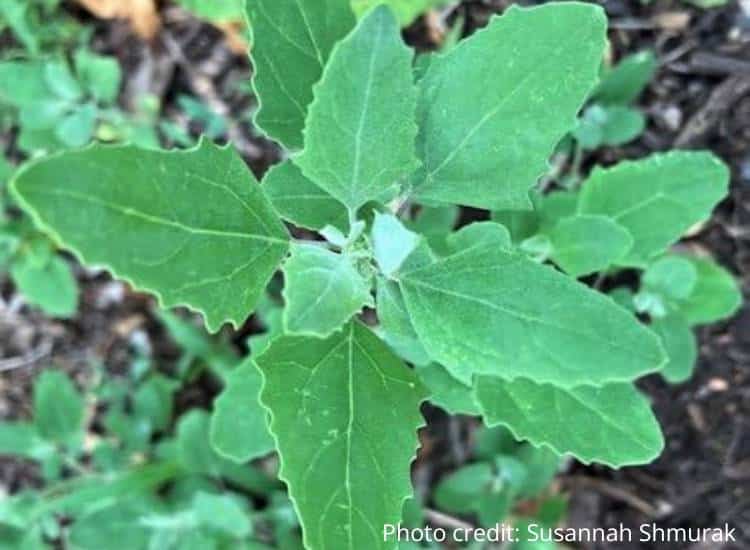
Lambs quarters (sometimes called wild spinach or goosefoot) is a versatile green you can use through much of the growing season. Unlike other wild greens, lambsquarters doesn’t get tough or bitter later in the season. You can use young leaves fresh in salad and whole tips cooked in soups, casseroles, and stir-fries.
Some consider the stem its own vegetable. Check out our collection of lambs quarter recipes for more ideas on how to use this excellent wild plant.
PURSLANE
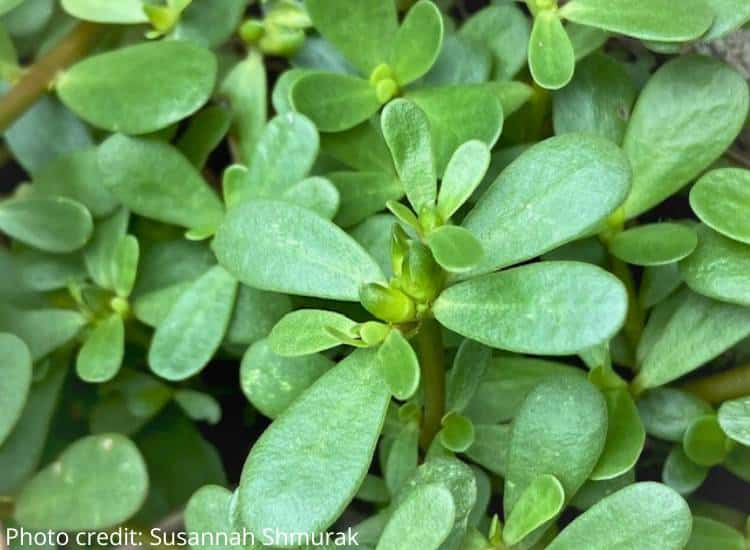
You can probably find purslane in your garden, and it’s one of the most nutritious wild plants you’ll harvest. It’s one of the few plant sources of omega-3s along with many other nutrients.
I like it in salads and smoothies (especially this anti-inflammatory smoothie recipe), but you can also cook with it. A beloved vegetable in many countries, try purslane in tasty purslane recipes from around the world.
Find out more about how to identify purslane and enjoy this excellent wild food.
WILD AMARANTH (PIGWEED)
Another common garden ‘weed,’ pigweed is a member of the amaranth family. A prized vegetable in many parts of the world, it’s rich in vitamins and minerals. You can use the mild-tasting young leaves raw or in cooked dishes. Amaranth has nutritious edible seeds that can be made into a hot cereal or popped.
You’ll find amaranth leaves used in cuisines from Asia to South America. Our collection of amaranth leaves recipes offers numerous ways to cook with this versatile ingredient.
CHICKWEED
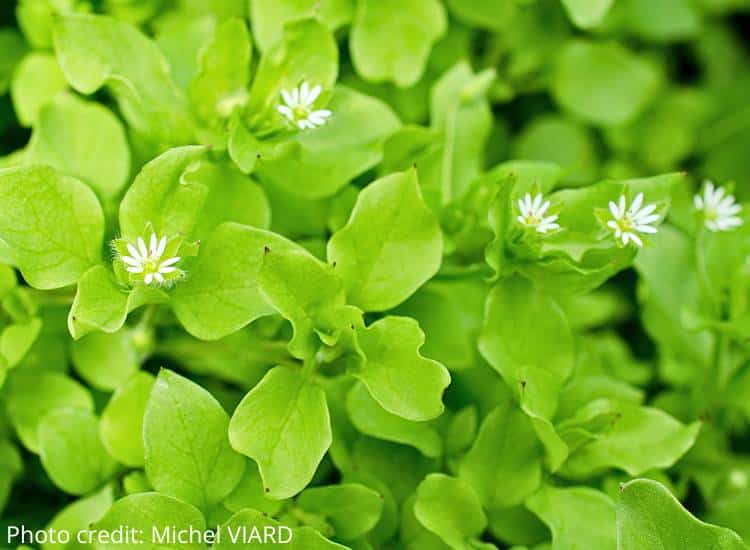
Chickweed is an early green that prefers cooler temperatures. You’ll find it in spring, and then it may reappear when temperatures cool in early fall.
Chickweed is most often used as a tender salad green, but it also works in sandwiches and cooked dishes. Chickweed may also be used medicinally.
Find out more about identifying and using chickweed.
DAME’S ROCKET
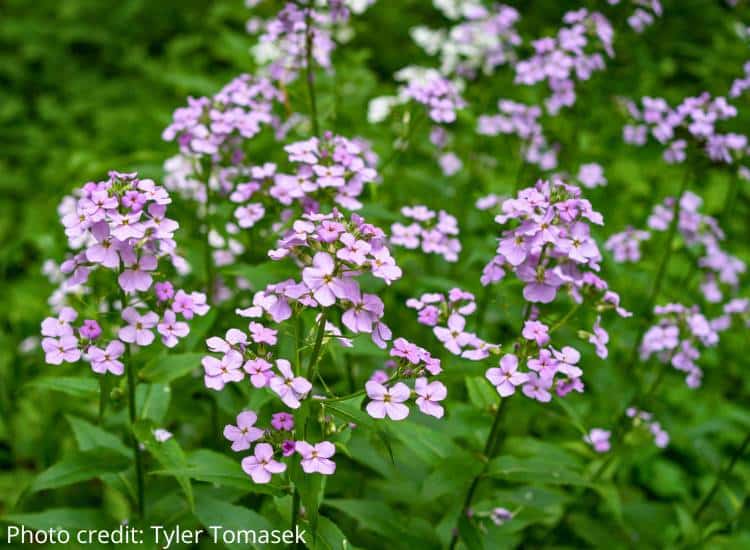
Dame’s rocket is a common invasive plant with tasty edible flowers, as well as edible leaves with a pleasant bitterness to them.
The name ‘rocket’ points to its relation to arugula (often called ‘rocket’), another green in the brassica family. Young dame’s rocket leaves taste quite like arugula. Best to cook older leaves.
LINDEN
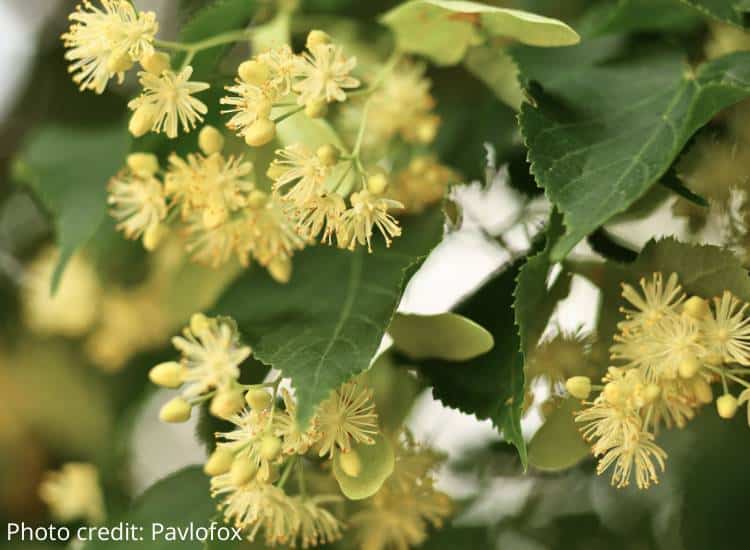
Most folks don’t realize how much edible wild food grows on trees growing in their neighborhood. Linden is an excellent tree to familiarize yourself with, since it’s delicious AND has 3 different parts you can harvest.
In spring, you’ll find tender green linden leaves make a delicious salad green. Later in the season, harvest the flowers to make wonderfully floral linden tea. At the end of the season, the little seeds that form can be used to make a paste that some have compared to chocolate. Forager Chef has a tutorial on making it if you want to know more.
PINE
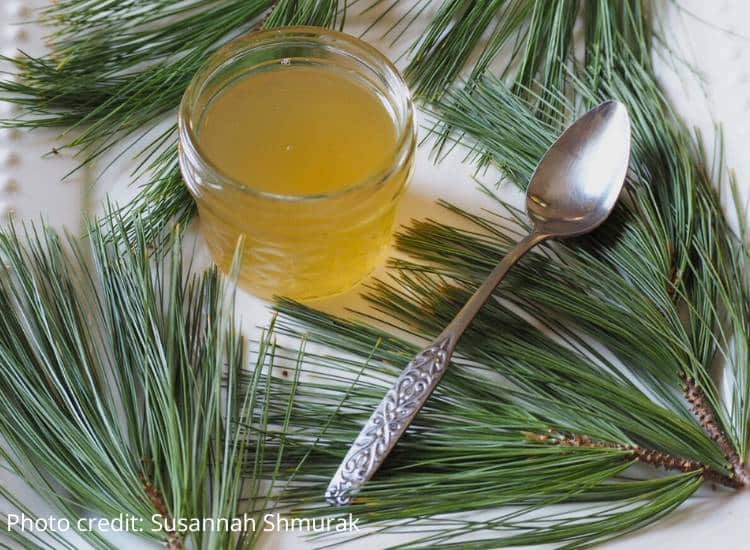
Plentiful and medicinally useful, pine needles can be used in a number of tasty ways, from tea to cookies.
Pine needle syrup makes a nice cocktail add in, and it’s also helpful for coughs and colds.
Try a simple pine needle tea the next time you’re feeling under the weather. Pine needles are rich in vitamin C and antioxidants, and herbalists often recommend pine for respiratory illnesses. I take pine needle tincture with me when I travel, as I’ve found it very useful when I feel like I’m coming down something.
I’ve collected a number of other ways to use pine needles as well. Check them out!
Young pine cones are edible when they’re young and green (not brown and woody) as well.
If you’re not sure about how to tell pine from other conifers, be sure to read this guide to identifying spruce vs fir vs pine, as some trees people mistake for pines are actually very poisonous.
Pine is just one of many medicinal trees worth getting to know.
SPRUCE
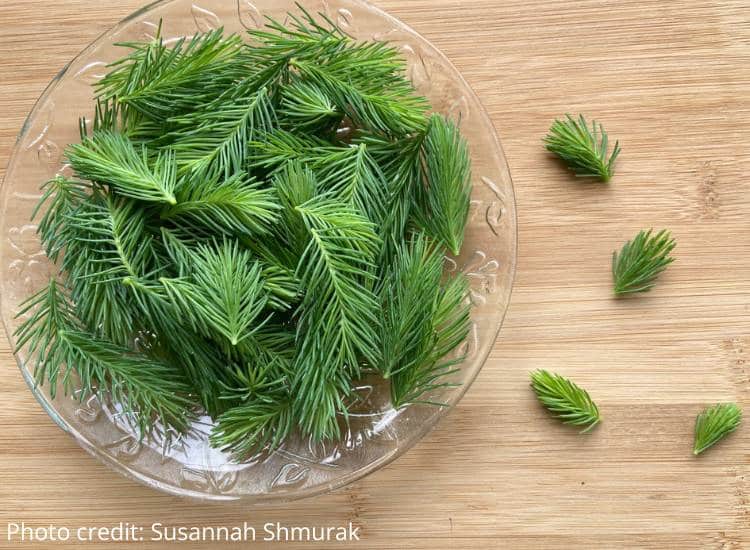
Spruce is another common conifer with edible cones and needles. Foragers especially love the tender new growth in late spring, called spruce tips. They’re citrusy and tasty and can be used in all sorts of ways. I’ve assembled a bunch of them in a collection of spruce tip recipes I highly recommend trying.
Learn more about foraging spruce tips, or use the mature needles to make a tasty spruce tea all year round.
If that’s not enough for you, check out our guides to other wild plants in our foraging archives.
OTHER WILD EDIBLE PLANTS TO EXPLORE:
Save this info on foraging wild edible plants for later!
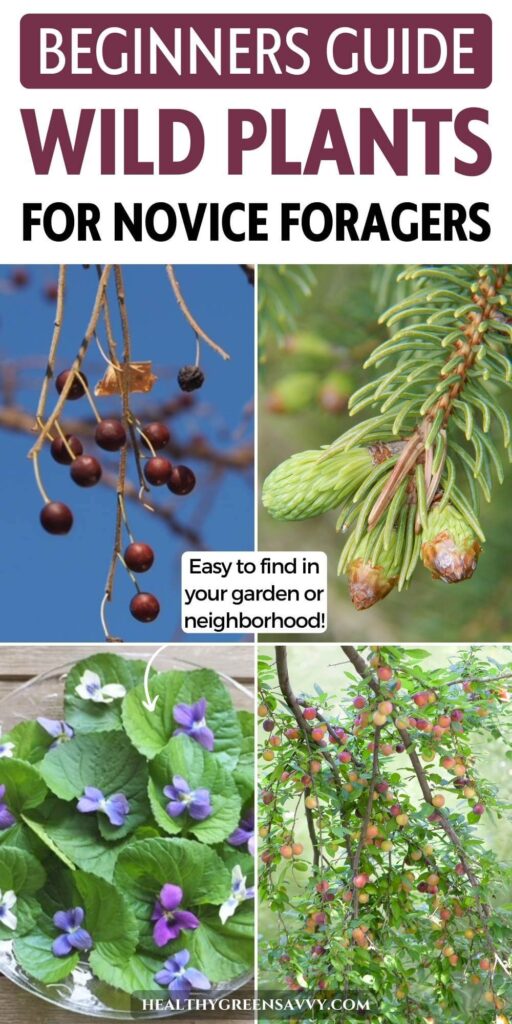
Additional photo credits: Cover — Susannah Shmurak ; Pin — Susannah Shmurak, ErikAgar, Susannah Shmurak, RussieseO
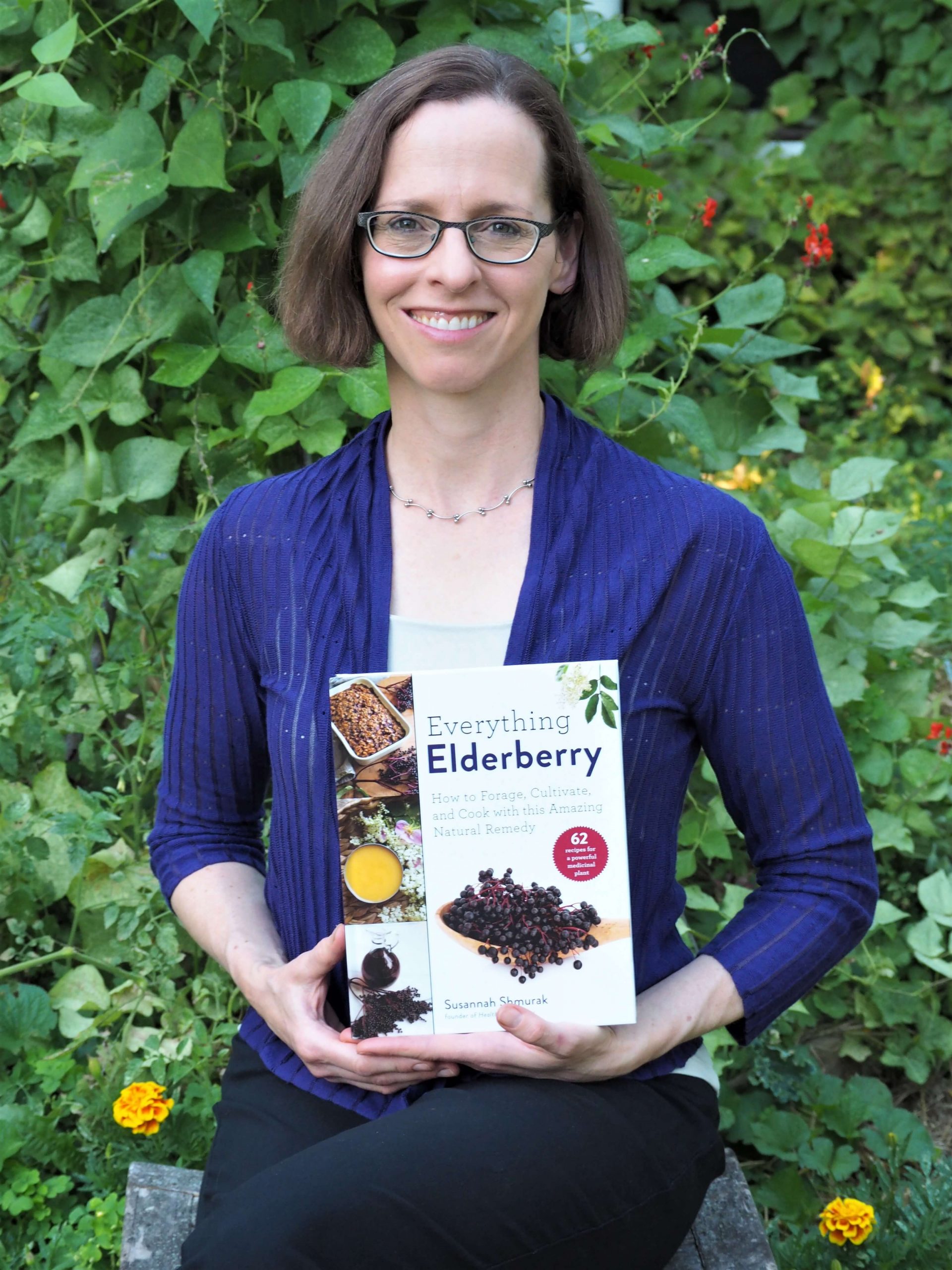
Susannah is a proud garden geek and energy nerd who loves healthy food and natural remedies. Her work has appeared in Mother Earth Living, Ensia, Northern Gardener, Sierra, and on numerous websites. Her first book, Everything Elderberry, released in September 2020 and has been a #1 new release in holistic medicine, naturopathy, herb gardening, and other categories. Find out more and grab your copy here.
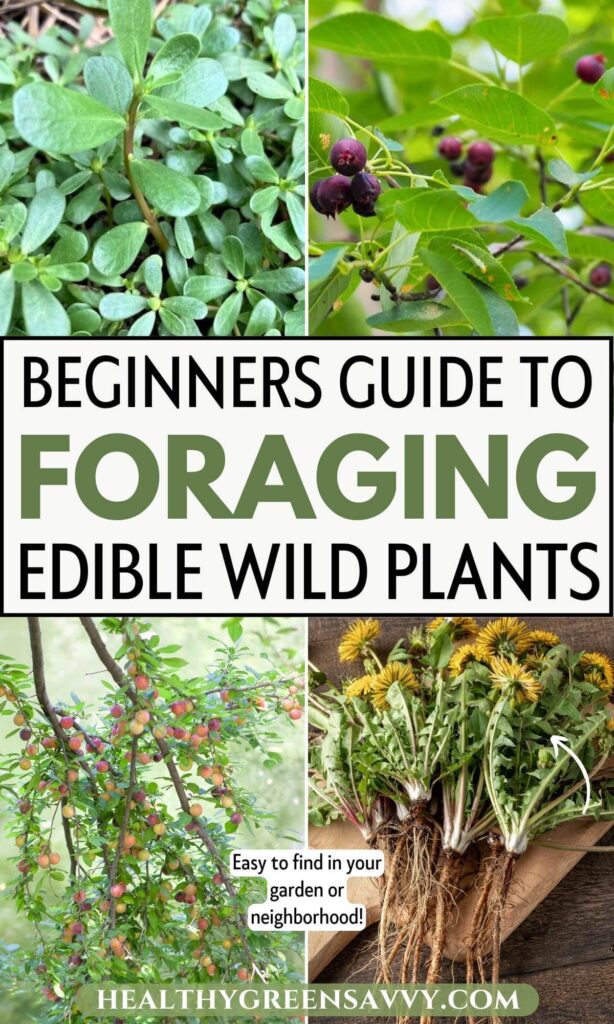
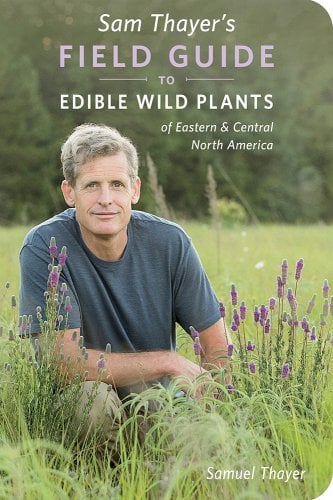
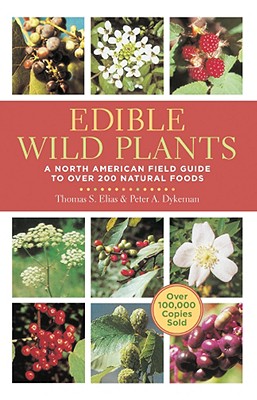

 Hi, I'm Susannah, a garden geek, energy nerd, and fan of healthy food and natural remedies. Need some simple, practical solutions for living healthier and greener? You've come to the right place! More about me and my green projects
Hi, I'm Susannah, a garden geek, energy nerd, and fan of healthy food and natural remedies. Need some simple, practical solutions for living healthier and greener? You've come to the right place! More about me and my green projects
Leave a Reply